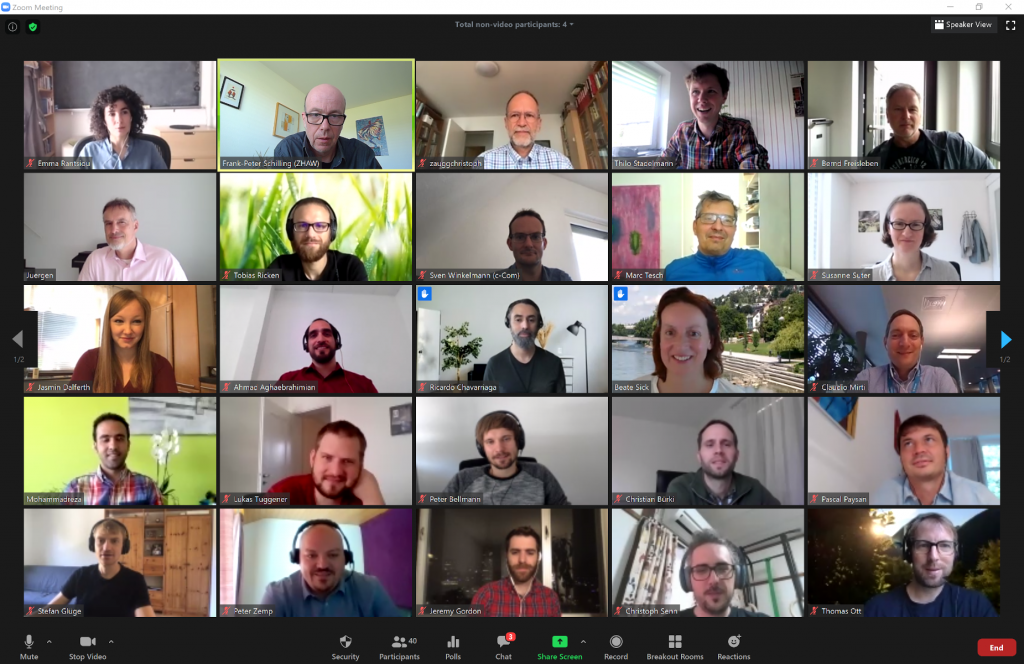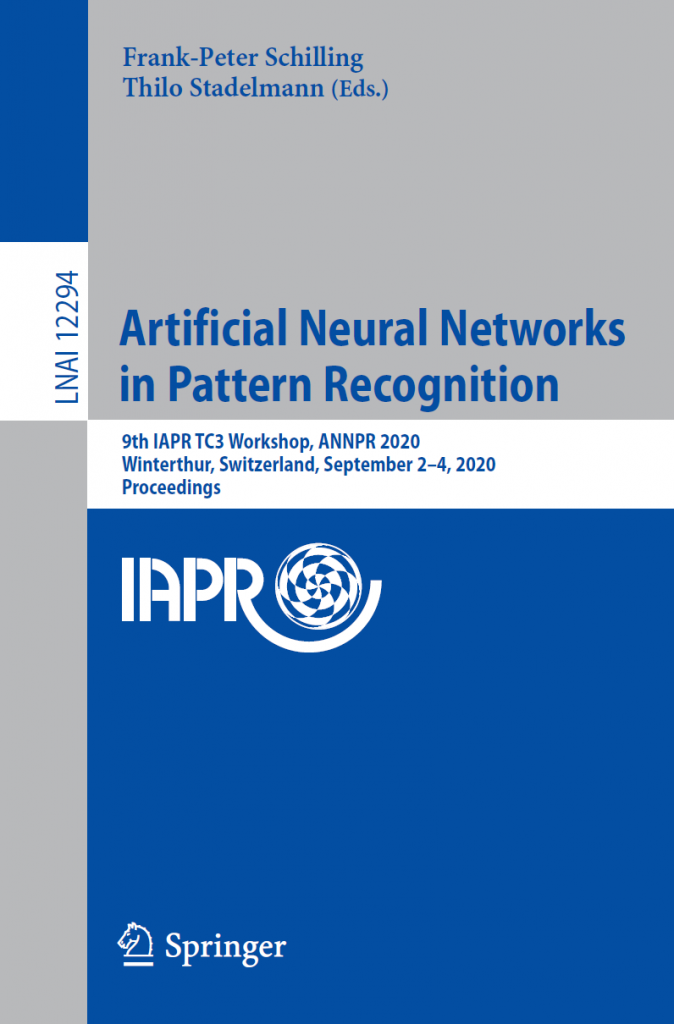By Bettina Mack (ZHAW)
ANNPR, the “International Workshop on Artificial Neural Networks in Pattern Recognition” is a biennial academic conference where researchers come together to discuss the most recent advances in the fields of neural networks, deep learning and artificial intelligence as applied to pattern recognition. Pattern recognition is the field of computer science which is concerned with making sense of data such as images (“What do we see in the picture?”), audio data (for example, to recognize spoken words) or time-dependent inputs such as weather or stock-market data. This year’s edition was organized by Frank-Peter Schilling and Thilo Stadelmann from ZHAW’s Institute of Applied Informatics (InIT) and took place from 2-4 September.
The fact that ANNPR 2020 was, for the first time, hosted at a university of applied sciences, offered a unique opportunity to broaden the scope and audience of the workshop. It involved not only academic research, but also applied research as well as real-world use-cases in an industry setting. The digital economy of Switzerland is mainly located in the Zurich area, represented by big, international tech companies as well as innovative start-ups. Several well- and less-well-known tech companies were invited to join the conference and contribute with their experience. This allowed to create an engaging hub for the interface between science and industry.
“At ZHAW, we focus on applied research with industrial partners. We want to open the door between purely academic research and industrial applications,” said Frank-Peter Schilling, chair of the organizing team at ZHAW. In 2020, also for the first time, the conference took place as an online-only event due to the current pandemic situation. This was facilitated by the well-known Zoom and Slack video-conferencing and networking solutions.
Keynotes on visual computing, unsupervised learning, face recognition, and more
The invited keynote speakers included internationally renowned AI researchers Jürgen Schmidhuber (Swiss AI Lab IDSIA, Lugano), Bernd Freisleben (University of Marburg), and Naftali Tishby (Hebrew University of Jerusalem). Pascal Paysan from Varian Medical Systems represented an industry perspective. They presented achievements in their fields as well as perspectives on current projects. These include challenges in visual computing (B. Freisleben), developments in unsupervised learning (J. Schmidhuber), global and local information bottleneck frameworks in Deep Learning (N. Tishby), and Machine Learning applications in image guided radiation therapy (P. Paysan).
In addition, the two-and-a-half-day conference hosted several sessions with 22 presentations of accepted papers on foundations as well as applications of neural networks in pattern recognition. These were selected out of 34 submissions by a peer review performed by an international Program Committee. The participating authors and presenters originated from diverse backgrounds and countries including Belgium, Italy, France, Germany, the United States, Russia, India, Japan, Egypt as well as Switzerland. Among the 22 paper presentations, five were authored by ZHAW researchers of the Schools of Engineering and Life Sciences and Facility Management.

And the award for best paper goes to …
Among the many outstanding papers, one research group stood out and was recognized with the Best Paper Award: “Geometric Attention for Prediction of Differential Properties in 3D Point Clouds” (by A. Matveev, A. Artemov, D. Zorin and E. Burnaev, Skolkovo Institute of Science and Technology, Russia and New York University, USA). Their work offers a new perspective on the estimation of differential geometric quantities in 3D data representations. In their paper, the authors present a module called “Geometric Attention”, that is “a novel attention-based module for improved neighborhood selection of point clouds”.
Additionally, the Best Presentation Award recognized the best performances at the online conference. Its two winners are “Going for 2D or 3D? Investigating various Machine Learning Approaches for Peach Variety Identification” (by A. Wróbel, G. Gygax, A. Schmid and T. Ott, ZHAW) and “Structured (De)composable Representations Trained with Neural Networks” (by G. Spinks and M.-F. Moens, Katholieke Universiteit Leuven, Belgium).
The ZHAW presenter and one winner of the Best Presentation Award, Anna Wróbel, investigated various machine learning approaches for identifying different kind of peaches. She and her team trained different neural networks to classify different peaches based on 2D and 3D images of their fruits’ stones. While many stones look similar to a human lay person, Anna’s approaches showed potential for an application in the field. “I was impressed by the accuracy of the algorithm, because I could not tell the peach stones apart myself,” she said.
Online networking with industry partners
Despite the online setup, the organizers provided ample room for networking and discussion.
For many participants, the industry session on Thursday was one highlight of ANNPR 2020. Seven companies (CSEM, LeanBI, Microsoft, die Mobiliar, SBB, ScorePad, Turicode) presented their applications of machine learning and neural networks in five-minute pitches. Their brief demonstrations were followed by discussions in the companies’ virtual Zoom booths. In those smaller chatrooms, the conference participants could ask questions and connect with the representatives for additional exchange and networking.
The conference proceedings are published by Springer and available online.
About ANNPR
ANNPR is organized by the Technical Committee 3 (IAPR TC3) on Neural Networks & Computational Intelligence of the International Association for Pattern Recognition (IAPR). In 2020, it was hosted by the ZHAW Institute of Applied Technology (InIT) at the ZHAW School of Engineering. In the past years, editions of the workshop were held in Siena (Italy), Ulm (Germany), Montreal (Canada), Cairo (Egypt) and Paris (France). More information at: https://annpr2020.ch/
